 Congratulations to Frack Free Denton.
Congratulations to Frack Free Denton.
{ 1 comment }
 Because there's been no public polling, it's impossible to know which side is leading in the Great Denton Fracking Vote of 2104 going into Election Day. Indications here and there in news coverage give hints that internal polling by industry shows them behind. But before the count begins tonight, one gets the feeling that even if the fracking industry wins, it still loses – that this will be a totally Pyrrhic victory.
Because there's been no public polling, it's impossible to know which side is leading in the Great Denton Fracking Vote of 2104 going into Election Day. Indications here and there in news coverage give hints that internal polling by industry shows them behind. But before the count begins tonight, one gets the feeling that even if the fracking industry wins, it still loses – that this will be a totally Pyrrhic victory.
It has only itself to blame. It raised the stakes so incredibly high, went so over-the-top in its opposition, that even those who might sympathize with some of its arguments can't stomach the bullying tactics used to defend them.
If, after spending almost a million dollars, becoming Chicken Littles of economic disaster, and recklessly throwing around libelous claims of secret Russian influence, it should win, it will be akin to The Hulk beating up a ten-year old near-sighted Boy Scout. But in setting-up such a mismatch, don't be surprised if you create a lot of backlash sympathy for the near-sighted Boy Scout. Everyone loves an underdog.
Attempts to equate "a DC-based environmental group's" in-kind contributions to Exxon's dump trucks of cash are laughable and wholly ineffective. Of the two sides, only the industry has made this a national rallying cry and given it a symbolism way out of proportion to its actual impact. Only the industry has made it an ideological fight for the ages. Locals have effectively kept it an us vs them community fight, with corporate out-of-towners as the villains. That's a perspective that tends to unite voters of a variety of hues.
So if the industry wins, the reaction will be of course it did. It bought the election. It used a Howitzer to swat a fly. Another example of raw corporate power in an age marked by its abuse. It won't have proved anything other than it can spend a lot of money driving a grassroots-driven initiative into the ground. Hooray for Mr. Burns!
From a practical standpoint, it will not have won them any new allies and, from all indications, made the Denton City Council as a whole even more anti-fracking and pro-ban than it was this summer. From here on out, it'll be a tough slog for any company that wants to drill a new gas well in town and development around older wells will be put under an electron microscope that might result in some precedent-setting zoning regulations.
Next May, long after the high-paid political consultants and corporate checks have deserted Denton, and with fewer Greg Abbott partisans showing up, they'll be a municipal election which will serve as a second referendum of sorts, where the effects of the last six months of grassroots organizing will be revealed in even higher relief.
And what if the near-sighted Boy Scout wins? Well, because the industry has set this up has a national test, that will be magnitudes more embarrassing and newsworthy than if the predictable purchasing of votes happens. It will be a Goliath-killing rebuke. It will spawn panic in boardrooms in Dallas and Houston, and back rooms in Austin. It will force State Representative Phil King to awkwardly explain how local control is OK for Texas when it comes to rejecting EPA regulations, but is absolutely wrong when it comes to cities rejecting the state's incestuous non-regulation. It will further paint the industry and their bought-and-paid for mouthpieces into a corner where their position will be: the less democracy, the better. That is not a winning strategy in the long run.
Regardless of the vote count tonight, it's hard to see the fracking industry emerging better off than it was when this whole thing started. And it only needs to look in the mirror to place the blame for that PR failure.
{ 0 comments }
 There's a public meeting hosted by TCEQ at 7pm tonight concerning the new permit for Holcim's Midlothian cement plant. It's taking place at the Midlothian Conference Center, at 1 community Center Road, right off Hwy 287. Here's a map if you need one.
There's a public meeting hosted by TCEQ at 7pm tonight concerning the new permit for Holcim's Midlothian cement plant. It's taking place at the Midlothian Conference Center, at 1 community Center Road, right off Hwy 287. Here's a map if you need one.
This is your only chance to ask questions and raise concerns about Holcim's new permit, or any other aspect of Holcim operations in a public forum in 2014.
Remember that Holcim's pollution contributes to higher smog levels as far north as Denton and Wise Counties. Along with TXI and Ash Grove, its plumes have been associated with higher childhood asthmarates in southeast Tarrant County.
Holcim is also still the only Midlothain cement plant still blasting for rock. The others use machinery to mine limestone, Holcim uses ammonium nitrate, the same explosives that caused the West, Texas catastrophe.
The good news is that Holcim has decided to install Selective Catalytic Reduction (SCR) pollution control on one of their two large cement kilns. That's what the new permit mostly is about. Although well-known for reducing smog-forming Nitrogen Oxide (NOx) in the European cement industry, Holcim is using it to reduce Total Hydrocarbons – a category of pollutionthat includes toluene, benzene, and xylene.
You can read about how important a victory SCR is for all DFW breathers here. It's been a 15 year effort. Holcim's decision to install SCR should be celebrated.
But important questions remain about when the SCR unit will become operational and how reductions in airpollution like NOx will be tracked by the company.
SCR is only being installed on one of two Holcim kilns in Midlothian. The other kiln is getting a "Regenerative Thermal Oxidizer" – the equivalent of a flare on a gas well – to burn off its total Hydrocarbons.
Because they're combustion-based, RTOs increase NOx pollution. How much, and how Holcim can catch that increase before it goes up the stack is alsothe subject of the permit.
The public meeting on Monday is not a hearing. But it is the only public forum where citizens can thank Holcim for finally installing SCR, as well as express their concerns and ask questions about the permit.
We know it's a busy time of year, and it's the day before Election Day, but do your lungs a favor and attend a meeting about a permit that can affect them for good or bad.
{ 0 comments }
 For the first time since DFW began recording its smog levels, the region's three-year running average dipped below the 1997 eight-hour 85 parts per billion (ppb) standard. After years of leveling off at around 86-87, it's dropped to 81 ppb. That's good news.
For the first time since DFW began recording its smog levels, the region's three-year running average dipped below the 1997 eight-hour 85 parts per billion (ppb) standard. After years of leveling off at around 86-87, it's dropped to 81 ppb. That's good news.
DFW's decrease is attributed to 2011's terrible numbers rolling off the board and a wetter, cooler and windier summer than normal these last five months or so. As both drought-ridden 2011 and this year's results demonstrate, weather still plays an extremely critical role in how large or small our smog problem will be. Another summer or two like 2011 could easily put us back over the 1997 standard. More wet and cooler weather could see the decrease continue.
The news would be better except that we were supposed to have originally accomplished this milestone in 2009, then again last year after a second try, according to the Texas Commission on Environmental Quality (TCEQ).
As it is, we still haven't reached the current, more protective 2008 national standard that was revised downward to 75 ppb after a review of the scientific literature.
In January, TCEQ will host a public hearing on its proposed "plan" to EPA to meet that goal that predicts most, but not all DFW monitors will reach 75 ppb by the summer of 2018.
Despite overwhelming evidence that new controls on the Midlothian cement plants and the reduction of gas industry pollution could speed this achievement, TCEQ's new plan contains no new pollution control measures on any major sources of smog polluters – cement kilns, coal plants, gas sources – but instead relies on the federal adoption of a new lower-sulfur gasoline mix for on-road vehicles. Like past proposals by Rick Perry's TCEQ, this one depends solely on the feds to get them into compliance. TCEQ isn't lifting a regulatory finger to help.
And its new plan once again aims high, not low. At last count, there were at least three Tarrant and Denton County monitors that TCEQ admitted would still be above the 75 ppb standard at the end of 2018. "Close enough" is the reply from Austin.
From a public health perspective, it's even worse. Why does the ozone standard keep routinely going down? Because new and better evidence keeps accumulating to show widespread health problems at levels of exposure to smog that were once considered "safe." About every five years, the EPA's scientific advisory committee must assess the evidence and decide if a new standard needs to be enforced to protect public health.
For most of the last ten years, the position of this independent panel of scientists is that the standard should be somewhere between 60 and 70 ppb. They were ignored in 2008. They were ignored in 2011. They once again came to this conclusion last May. What was the evidence that persuaded them? That the current 75 ppb standard for smog causes almost 20% of children in "non-attainment areas" to have asthma attacks, and leads to hundreds of thousands of deaths every year. Cutting the standard to 60 ppb reduces those deaths by 95%. Since the Clean Air Act states the EPA is duty bound to set a smog standard protective of human health, 60 ppb seems to be the threshold level that the current scientific literature says is actually safe for the majority of the population most vulnerable to the impact of bad air. By contrast, a smog level of 70 ppb only reduces those deaths by 50%. (Policy Assessment for the Review of the Ozone National Ambient Air Quality Standard, U.S. Environmental Protection Agency, Office of Air and Radiation, Office of Air Quality Planning and Standards, Health and Environmental Impacts Division, Ambient Standards Group, August 2014)
By December 1st, EPA Administrator Gina McCarthy must decide whether to officially recommend a standard in that 60-70 ppb range. It looks as though this time, the EPA might just endorse what the scientists are recommending, although it's unclear whether it'll be the upper or lower part of that range.
So even while the TCEQ is saying it's "close enough" to achieving the 75 ppb standard left over from George W's administration by 2018, the evidence is that level is too high to prevent large public health harms and must be lowered. A lot.
This is why it's so infuriating that the TCEQ is satisfied with getting only "close enough" to a 2008 standard that's about to become obsolete. Austin knows it could demand better air pollution control measures on the market right now that would accelerate the decrease in smog. It knows the pubic health would benefit from requiring such measures. But it's willing to condemn DFW children and others at risk for many more years for the sake of keeping its "business-friendly" reputation.
And while this year's slip below the 85 ppb standard is a sign of some progress, it remains true that DFW still has the worst air in Texas – a title we took from Houston years ago. Take a look at the chart summarizing the 2014 ozone season across Texas. Despite the nicer weather, DFW still had almost twice as many readings above 75 ppb as Houston and four above the 85 ppb standard. Houston had no readings above 85. In fact, San Antonio was the only other city to record a level so high – once.
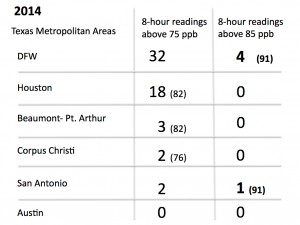 DFW still has a smog problem and all it takes is another hot and dry summer to see it escalate. We need the help more controls on major sources could give us. We need Selective Catalytic Reduction on ALL the Midlothian cement and East Texas coal plants. We need electrification of gas compressors in the Barnett Shale. This should be the message to both the TCEQ and EPA during the public hearing in January.
DFW still has a smog problem and all it takes is another hot and dry summer to see it escalate. We need the help more controls on major sources could give us. We need Selective Catalytic Reduction on ALL the Midlothian cement and East Texas coal plants. We need electrification of gas compressors in the Barnett Shale. This should be the message to both the TCEQ and EPA during the public hearing in January.
DFW smog in 2014: we've met the Clinton era standard for now, on the way to trying to get "close enough" to the W Standard, and still very far from a new Obama standard. Don't hang up the gas mask yet.
{ 0 comments }
 (Mansfield)— A new group of Mansfield residents is sponsoring what’s believed to be the first DFW presentation by a medical doctor on the health effects of fracking as part of a campaign to re-write the city’s six-year old drilling ordinance they say no longer reflects the best science, or provides enough public protection.
(Mansfield)— A new group of Mansfield residents is sponsoring what’s believed to be the first DFW presentation by a medical doctor on the health effects of fracking as part of a campaign to re-write the city’s six-year old drilling ordinance they say no longer reflects the best science, or provides enough public protection.
Mansfield Gas Well Awareness is hosting Dr. Anne Epstein, M.D. at the Mansfield Holiday Inn on October 29th beginning at 7 pm. Dr. Epstein is an internal medicine specialist who graduated from Baylor Medical School and sits on the Lubbock County Board of Health. She’s a member of the Board’s Oil and Gas Advisory Committee that recently voted to recommend setbacks of 1500 feet separating homes, workplaces, and schools from wells. Mansfield currently allows wells as close as 600 feet to residences, with post drilling development up to 100 feet.
“Our 2008 ordinance was written before new scientific studies showing higher rates of birth defects and cancers among those living close to gas wells,” said Tamera Bounds, a member of MGWA. “Like Lubbock, Dallas and other Texas cities that have looked at those studies recently and adjusted their regulations, Mansfield must update its obsolete rules to better protect our families and property values.”
206 gas wells have been drilled in the city of 60,000 in the last six years with the potential to drill 300 more. That’s almost as many as Denton, with twice the population. Almost every Mansfield resident currently lives within a mile of one well or more. However, the Special Use Permits (SUPs) approved by the city expire after five years. SUPs for undrilled wells approved in 2008 and 2009 have already expired or will soon, and MGWA wants the city to take the opportunity to strengthen its drilling ordinance.
“We want to make sure our rules match the new science by allowing for bigger buffer zones, more air pollution controls and better monitoring and emergency response,” said Bounds. She citied 2008 correspondence from a gas well operator to the Mansfield Planning and Zoning Committee that claimed closer distances between schools and wells, as opposed to nursing homes, were justified because “children are very mobile.”
“We need rules based on more than the industry’s estimate of how fast our children can run.”
Among the recent studies cities by Bounds and scheduled to be reviewed by Dr. Epstein are those from the University of Colorado School of Public Health that trace close proximity to gas wells with higher rates of birth defects, and the National Institute of Occupational Safety and Health that discovered benzene and silica levels among workers at drilling sites that exceeded federal exposure limits.
Bounds’ group is being assisted by DFW clean air group Downwinders at Risk, which was instrumental in getting a new Dallas gas ordinance passed in 2013. Downwinders Director Jim Schermbeck says he thinks the Mansfield effort marks a milestone in Tarrant County’s coping with the Barnett Shale drilling boom. “It’s a great example of residents in a city saturated with wells after the first wave of drilling trying to recover and catch up with the science before the next wave makes things a lot worse.”
Schermbeck cautioned that the Mansfield group had an uphill climb considering its current council make-up.
At least two of Mansfield’s city council members are directly involved in the fracking business. Larry Broseh is the president of Drill King International, a manufacturer of drilling equipment, and Stephen Lindsey is Director of Government Affairs of Quicksilver Resources, a natural gas and oil exploration and production company.
Bounds said the group would ask those two council members to recuse themselves from the writing of a new ordinance because of their conflict of interests. “ This needs to be a citizen-driven process. It needs to be a science-driven process. The 2008 ordinance came directly from industry and hardly involved residents at all. This time, things need to be different.”
{ 1 comment }
 When explaining how the powers of state government are distributed under the Texas Constitution, the emphasis is usually on how powerful the Lt. Governor is and how weak the Governor actually is – a leftover from the Confederate backlash to Reconstruction.
When explaining how the powers of state government are distributed under the Texas Constitution, the emphasis is usually on how powerful the Lt. Governor is and how weak the Governor actually is – a leftover from the Confederate backlash to Reconstruction.
But that explanation usually assumes a traditional two-term governor, not one who takes up residency for 14 years.
In the past it was hard for any one Texas governor to put their personal stamp on so many state agencies so deeply because they were out after four to eight years and the terms of the appointments were staggered. Multi-member commissions were a mix of appointees from different administration, representing different government philosophies and parties. This made compromise a necessity.
And then came Rick Perry.
After 14 years, he's not only been able to appoint all the top level decision-makers in all of the state's various agencies and commissions, he's been able to go down two to three layers deep in each bureaucracy and make sure those mid-level officeholders reflect the same views. Compromise is no longer necessary. Through this process, he's assembled more power than perhaps any other Texas governor in history.
Even if Wendy Davis were to win next month, it would take many years to replace Perry's choices for all of the state agencies that affect Texans on a daily basis. Some don't expire until 2019. And Davis would have to win approval for each appointment from what is shaping up to be the most business-friendly state senate Texas has seen since Spindletop.
Recently, the Austin American Statesman reviewed over 8,000 Perry appointments, and found:
Nearly 4 in 5 Perry appointees are white, even as the portion of whites in the state dropped from 55 percent in 2000 shortly before Bush left office to 44 percent in 2010. Overall, 77 percent of his appointees have been white, and 67 percent are male.
Perry has appointed 90 of his former employees to boards and commissions, placing trusted lieutenants in the upper echelons of government agencies. Twenty-three of those one-time governor’s office workers were given paid appointments.
Nearly a quarter of appointees are donors to Perry’s campaigns, together giving more than $20 million. That constitutes a fifth of all contributions he has received during his time as governor.
No agency reflects Perry's these trends more thoroughly than the Texas Commission on Environmental Quality.
Zac Covar, white and male, was a Perry aide, who then became an assistant to the TCEQ Chairman appointed by Perry, who then became Executive Director of the TCEQ, who then became one of three Commissioners himself. He's also a fellow Aggie, graduating with a Bachelor of Science in Poultry Science from Texas A&M University, making him imminently qualified to help run the largest environmental agency in the free world outside of the EPA. His term expires next year.
Commissioner Toby Baker, white and male, was another Perry aide, and another fellow Aggie, with a degree in Public Administration. His term expires in 2017.
Chairman Bryan Shaw, white and male, is still another fellow poultry science degreed graduate of A&M, although you be hard-pressed to discover that in his official job description now days (two chicken scientists ruling the TCEQ coop seems to be an embarasment that even shames the Perryites). Since he was last appointed in 2013, his six-year term won't be up until 2019.
It's not only the top administrators at TCEQ who are full-fledged mini-mes of Perry. It's also the agency's Chief Engineer Susana M. Hildebrand, who's been known to flat out lie to Legislative Committees about the inconvenient results of studies that don't reflect the hardcore pro-leave-industry-alone views of the Perry Administration. It's the TCEQ's Chief Toxicologist, Michael Honeycutt, who keeps insisting that smog really isn't that bad for you. And on and on.
The result of all this political in-breeding is an agency which is the largest purveyor of junk science in the state, taking every industry-financed "study" and promoting it as if it were gospel, even if it's in the extreme minority of scientific opinion, while discounting the overwhelming collection of independent academic reviews that contradicts it. That's how you arrive at the point where the state's major environmental agency says there's no such thing as climate change, no harm in smog, and the continuing release of millions of tons toxins are no big deal. That's how a month before Holcim decides to install SCR at its Midlothian cement plant, a representative of TCEQ can say straight faced in an Arlington regional air quality meeting that the technology "isn't technically feasible."
This is why many of the state's citizen groups have given up on anything useful coming out of Austin for the foreseeable future. They've decided that If change is going to happen in Texas it'll be at the local level, where Rick Perry's fingerprints have not yet smudged all reconciliation with reality. And that's exactly why recent local expressions of people power, like the Dallas drilling ordinance and the Denton fracking ban vote are such a threat to an otherwise watertight hegemony emanating from the Governor's office.
{ 0 comments }
 Many of you are probably headed to the Sierra Club's Earth Wind and Fire energy get together this coming weekend in Addison. As a kind of primer on how greener, cleaner energy could flourish in the US and what it would mean to the way we produce, distribute, regulate and charge for power, you might want to check out this New York Times piece from earlier in the month on how Germany is turning the corner.
Many of you are probably headed to the Sierra Club's Earth Wind and Fire energy get together this coming weekend in Addison. As a kind of primer on how greener, cleaner energy could flourish in the US and what it would mean to the way we produce, distribute, regulate and charge for power, you might want to check out this New York Times piece from earlier in the month on how Germany is turning the corner.
Deutschland is close to getting 30% of its energy needs from renewable sources, by far the leader among heavily industrialized nations – America is currently achieving about half that. That's impressive, but by far the most interesting parts of the story is what kind of ripples in the marketplace a commitment to green power can produce once a government decides to make that commitment.
For example, it's in large part due to German demand for solar that the prices of Chinese solar panels have plummeted, making the choice cheaper for everyone else around the planet. Likewise, more off shore wind power is being built to correspond to the daylight hours when it's needed most by consumers and those prices are also coming down thanks to German leadership.
Especially noteworthy is the anxiousness of utility companies who see their old business plan of large, centralized power systems evaporating with the rise of so many smaller, decentralized options. As the article states:
"A reckoning is at hand, and nowhere is that clearer than in Germany. Even as the country sets records nearly every month for renewable power production, the changes have devastated its utility companies, whose profits from power generation have collapsed.
Some experts say the electricity business is entering a period of turmoil beyond anything in its 130-year history, a disruption potentially as great as those that have remade the airlines, the music industry and the telephone business."
Among the strategies in play are "energy retainers" – regular payments to persuade utilities to keep some fossil-fuel power plants on standby for times when renewable sources lag. That's a complete upside down pyramid approach from previous years that saw those same older plants used as "base load" facilities with renewables supplementing them when necessary.
And while the sources of power are changing as a result of this energy revolution, so are the ways people use it. In Texas' deregulated electricity market, you're already seeing different pricing for different times of day so that consumers take better advantage of non-peak hours. Appliances like dishwashers and water heaters with "smart chips" in them could automatically take advantage of these differences and level out demand.
Check out the NYT piece and then, for a more radical American perspective on the German energy revolution and how it can be translated into action on this side of the Atlantic by the guy that invented the term "negawatts" read Amory Lovins' take. Lovins has been at the forefront of alternative energy since before the term was created and what were once thought to be fanciful flights of imagination on his part by the utility companies are the reality they're now having to deal with.
{ 0 comments }
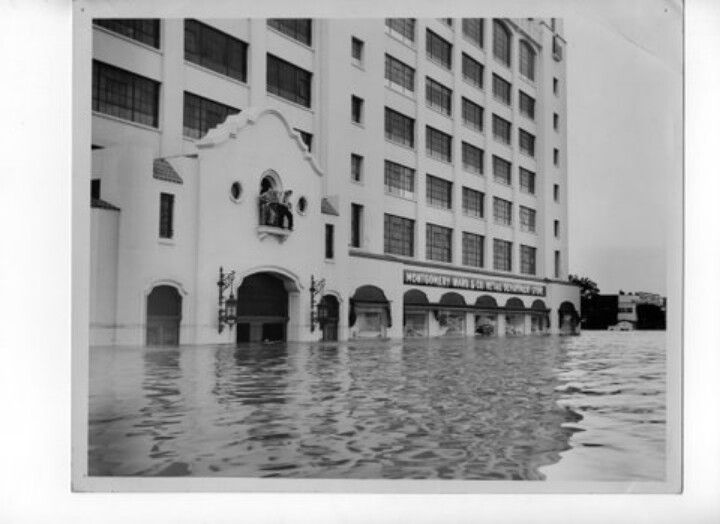 Via the Fort Worth Star-Telegram, it seems the city finally wised up and decided it was not a good match to have the most high-profile promoter of urban gas drilling in Cowtown be the spokesperson for a new "healthy lifestyle" initiative.
Via the Fort Worth Star-Telegram, it seems the city finally wised up and decided it was not a good match to have the most high-profile promoter of urban gas drilling in Cowtown be the spokesperson for a new "healthy lifestyle" initiative.
Last Friday, Healthways announced that former Chesapeake top executive and all-around shill for everything-is wonderful-about drilling, Julie Wilson, had resigned her post as VP for the Fort Worth Blue Zones Project that seeks to promote a dialog about healthier choices for residents. Unfortunately it arrives about eight years too late to initiate a discussion about the wisdom of putting large toxic air polluters next to homes, schools, and parks.
Wilson's appointment to the Zones Project had raised eyebrows and objections even among a mostly quiescent Fort Worth population that had been among the first victims of the fracking boom in the late "Oughts." As in, we ought to have thought about this some more. Blue Zones got sizable blowback over her hiring, and it followed them wherever they showed up for one of their many community meetings, making for uncomfortable distractions to their more mainstream agenda concerning people's smoking, eating and exercise habits.
Wilson's resignation is one more sign of how far Chesapeake's star has fallen in Fort Worth. It's former corporate headquarters on the banks of the Trinity is now owned by Pier 1. Most of its Barnett Shale holdings have been auctioned off for needed cash. Aubrey McClendon, its founder and CEO had to resign last year after a stock scandal. The city and other entities are suing the company for royalties they think they were cheated.
But like the high-watermark from the 1949 flood that lasted for decades on the old Montgomery Wards' warehouse on 7th street, the pollution from its former facilities and stains on Ft. Worth's civic infrastructure from Chesapeake's invasion remain to remind everyone just how badly Fort Worth was rolled by the company.
{ 0 comments }
 (Midlothian) After a 14-year effort by local citizens, Holcim US Inc. is applying for a permit to the Texas Commission on Environmental Quality to install a Selective Catalytic Reduction (SCR) unit in their Midlothian facility. It's the first application for commercial use of SCR technology in any U.S. cement kiln.
(Midlothian) After a 14-year effort by local citizens, Holcim US Inc. is applying for a permit to the Texas Commission on Environmental Quality to install a Selective Catalytic Reduction (SCR) unit in their Midlothian facility. It's the first application for commercial use of SCR technology in any U.S. cement kiln.
DFW-based clean air group Downwinders at Risk has been advocating the use of SCR in the three Midlothian cement plants located just south of I-20 since 2000, when a German cement kiln first operated the technology successfully.
Together, the TXI, Ash Grove, and Holcim plants represent the largest concentration of cement manufacturing in the country and are a major contributor to DFW's historic smog problem.
"We need this pollution control technology in North Texas, and we're pleased to see Holcim's application," said Downwinders Director Jim Schermbeck. "But we wish residents could enjoy its results sooner than Holcim intends."
The SCR unit is planned for Holcim's idle Kiln #2 while a more common Regenerative Thermal Oxidizer will be built for its operating Kiln #1. Both technologies are being installed to meet new EPA emission standards for hydrocarbon pollution from cement plants. Those standards themselves were championed by Downwinders and other citizen groups in 2009, with over 200 people showing up at an EPA hearing the the DFW Airport Hotel to support them.
The deadline for compliance with the new standards is September 2016. However, restarting of Kiln #2, and the introduction of SCR in Midlothian, is dependent on local demand for Holcim's cement, which is still recovering from weak demand during the recession. That lack of demand could delay the technology's inauguration until after 2016.
Nevertheless, according to Schermbeck, Holcim's application for a permit to install SCR makes it's more likely that all of the Midlothian cement plants, and others in EPA "non-attainment areas" for smog pollution around the country, will be adopting it sooner rather than later.
"Holcim's application sets a precedent that's hard to ignore by regulators in Austin and Washington. For the first time a US cement plant has expressed enough confidence in SCR to make it a technically and economically-viable choice for pollution control. There's no going back."
SCR is widely considered to be the most advanced form of pollution control for cement manufacturing, capable of reducing smog-forming pollution by 90% or more, along with significant reductions in Particulate Matter, metals, and Dioxins.
Although about half a dozen European cement kilns are successfully operating the technology, U.S. plants have refused to endorse it. Two EPA-sponsored pilot tests of SCR are being conducted at Indiana and Illinois cement kilns as part of court-ordered settlements. Holcim's application for its Midlothian kiln is the first time and American cement plant is voluntarily approving SCR use.
Although it's not coming in time to impact the current DFW clean air plan, due to go to public hearing in January of next year, Holcim's application will put SCR on the agenda for the next such plan.
Just two weeks ago, EPA staff recommended a new ozone, or smog, standard of between 60 and 70 parts per billion over an eight hour period versus the current limit of 75 ppb. Adoption of a stricter standard is expected to occur by late next year, meaning a plan to meet that standard will be gearing up sometime in the next three to five years. By that time, Holcim's SCR unit should have a track record that can be cited as a reason for all the Midlothian cement plants to use it.
Schermbeck noted that just last month representatives of the TCEQ told a regional air quality meeting in Arlington that SCR was neither an economical nor technically feasible pollution control option for the Midlothian cement plants. He said Holcim's application belies that claim.
A public meeting on the Holcim permit application is being scheduled for early November.
Arrival of SCR on the scene marks the latest and the most dramatic milestone in the transformation of the local cement industry since Downwinders at Risk was founded 20 years ago to stop the burning of hazardous wastes in the Midlothian kilns.
After a 14-year battle, TXI halted its hazardous waste-burning operations in 2008. Downwinders then pursued a six-year "green cement" campaign to replace all seven obsolete and dirtier wet kilns with newer "dry kiln" technology. That campaign ended in 2012 with the announcement that Ash Grove would shutter its three wet kilns and build a new dry kiln in their place. That plant is due to go on line this year.
Adoption of SCR remained a goal of the group through four different DFW clean air plans going all the way back to 2000. Schermbeck said his group made incremental progress each time, winning small and large battles that directly lead to today's news.
"Holcim's application for SCR is the latest testament to the persistence and focus of a small group of committed citizens who have pulled and pushed the U.S. cement industry into the 21st Century one step at a time."
{ 0 comments }
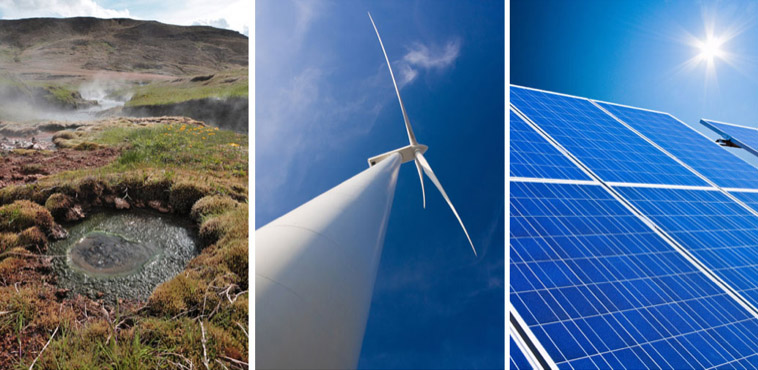 Organizers are giving you until tomorrow, September 12th to early register for the largest citizen-organized energy conference DFW has ever hosted, the Sierra Club's Earth, Wind and Fire Energy Summit scheduled for October the 4th and 5th. Topics cover the spectrum, from wind and solar to fracking and waste-to-energy boondoogles. At- the-door registration is $25 more than the $55 you pay by signing up now, so save yourself some money.
Organizers are giving you until tomorrow, September 12th to early register for the largest citizen-organized energy conference DFW has ever hosted, the Sierra Club's Earth, Wind and Fire Energy Summit scheduled for October the 4th and 5th. Topics cover the spectrum, from wind and solar to fracking and waste-to-energy boondoogles. At- the-door registration is $25 more than the $55 you pay by signing up now, so save yourself some money.
{ 0 comments }
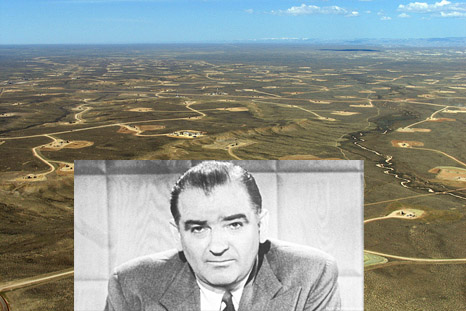 A second member of the Texas Railroad Commission has accused US fracking opponents of being financed by Russian gas interests. That makes two out of three. Your immediate reaction may be: "Oh yeah, Where's my check?" But Davis Porter is serious, and in making the charge, Porter is walking a fine line in seriously slandering Josh Fox and others with his reckless accusation, which has everything it needs except, you know, proof.
A second member of the Texas Railroad Commission has accused US fracking opponents of being financed by Russian gas interests. That makes two out of three. Your immediate reaction may be: "Oh yeah, Where's my check?" But Davis Porter is serious, and in making the charge, Porter is walking a fine line in seriously slandering Josh Fox and others with his reckless accusation, which has everything it needs except, you know, proof.
Porter made the claim in a snappy press release entitled “Porter Exposes Putin Plot to Hurt Texas Economy,” that jumps from the fact that the Russian gas giant Gazprom has hired a US public relations company to try and soften the impacts of sanctions over the Ukraine crisis into a dark and secret conspiracy to promote home grown fracking opposition. Believing this story would first require the laughable leap of faith that the PR firm's go-to Gazprom lobbyists, former GOP Senate hardliner Trent Lott (R- Mississippi) and Blue Dog Democrat John Breaux (D – Louisiana), are turning their backs on big business in their own states and hanging out with the cast of Gasland. Not bloody likely.
But that's not stopping Porter. In his press release he says the Russians are using the PR partnership not to get out from under pressing US sanctions for their illegal invasion of another country, but "to spread unsupported propaganda about the environmental and health risks of the practice of fracking."
Citing a dire warning he's already sent via a very serious letter to Secretary of State John Kerry, Porter reveals that Moscow's "apparent strategy includes funding anti-hydraulic fracturing environmental organizations, placing misinformation in the public, and even mass media propaganda — namely their assistance with the distribution of Gasland, an incredibly deceitful film about hydraulic fracturing in America."
Porter uses wire reports about the PR firm's hiring to make explicit what RRC Commissioner Barry Smitherman only artfully hinted at in his letter to the marathon Denton City Council meeting in July over the debate on a fracking ban in that city – that US anti-fracking activists are being financed by the Russkies.
There's only one problem, none of the news reports about the hiring of the PR firm has mentioned fracking, even in passing. Even in footnotes.
To make that strained connection, Porter relies on an undated piece by one Keith C Smith who was with a think tank outfit called the Center for Strategic and International Studies. Smith cites nefarious Russian influence in Bulgaria's decision to ban fracking and German business ties to Russian gas to suggest that there's a master plan to leave Russia as the sole provider of natural gas to Europe and freeze out US imports.
Will you be at all surprised to learn that Mr. Smith has been "a consultant to several energy companies?"
To its credit, the Texas Tribune, which broke the story, asked Porter for specific examples showing Gazprom was funding anti-fracking efforts in America. Porter’s spokeswoman Mary Bell said in an email: There are multiple news reports citing Gazprom's influence and efforts in the EU and the US. Some are linked in the letter.” She means the Smith article, which shows absolutely no influence on US anti-fracking activities, and the news reports about the recent hiring of the PR firm to help the Russians avoid sanctions, but mentions nothing about fracking.
See how that works? First, we have a piece by an energy company consultant that says he strongly suspects Russian influence in the Bulgarian fracking ban, but can't prove it. Next, Gazprom hires a PR firm to avoid the repercussions of sanctions over the Ukraine invasion. Ergo, Russia's "influence and efforts in the EU and US" are plain as day.
When he was asked by the Tribune as to Russian influence in Denton's fracking vote, Porter spokeswoman Bell said that “the commissioner's comments are not specific to Denton,” but “Gazprom is spending tens of millions of dollars — that we know of — to eliminate competition globally. It's likely they've influenced much of the anti-hydraulic fracturing movement's message.”
Students of history know this is exactly how McCarthyism works – by innuendo instead of fact. Indeed, the Wikipedia definition of McCarthyism is "the practice of making accusations of disloyalty, subversion, or treason without proper regard for evidence." It also means "the practice of making unfair allegations or using unfair investigative techniques, especially in order to restrict dissent or political criticism."
Commissioner, have you no sense of decency, sir? At long last, have you left no sense of decency?
{ 2 comments }
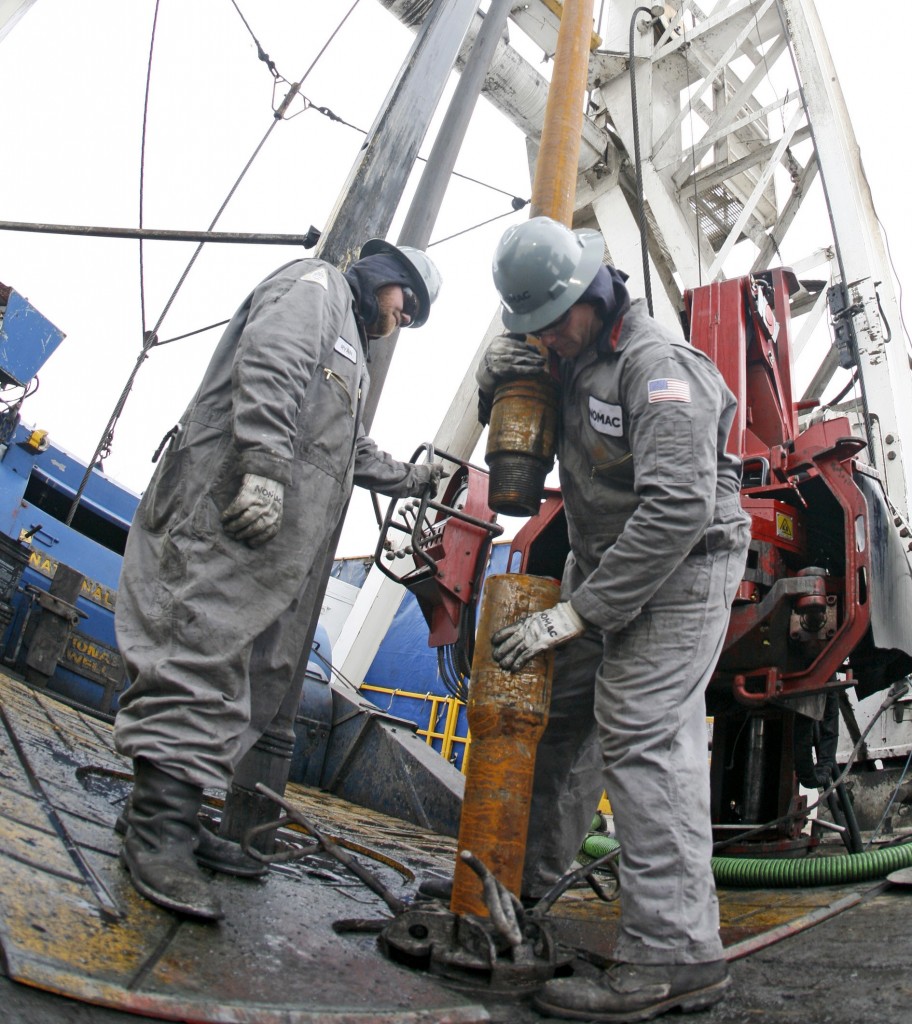 On Labor Day we wrote about the fact that workers employed by polluters are often as much at risk from exposure to the polluters' poisons as near-by homeowners. A new peer-reviewed study of six fracking sites in Colorado and Wyoming published by the National Institute of Occupational Heath and Safety (NIOSH) is fresh proof of this, showing 15 of 17 tests for Benzene exposure among workers who were monitoring on-site fracking well "flowback" exceeded the federal eight-hour exposure limit.
On Labor Day we wrote about the fact that workers employed by polluters are often as much at risk from exposure to the polluters' poisons as near-by homeowners. A new peer-reviewed study of six fracking sites in Colorado and Wyoming published by the National Institute of Occupational Heath and Safety (NIOSH) is fresh proof of this, showing 15 of 17 tests for Benzene exposure among workers who were monitoring on-site fracking well "flowback" exceeded the federal eight-hour exposure limit.
The study looked at drill site workers who use a gauge to measure the amount of "flowback" water that returns after a frack job is initiated. Flowback is the regurgitation of the fracking fluids from the well itself. It's collected on the surface after hydraulic fracturing is completed.
Benzene is a known carcinogen that's routinely present in fracking flowback water. It’s the same poison found in gasoline, cigarette smoke and a lot of chemical manufacturing and refining. It's been directly linked or associated with leukemia and other conditions, such as Acute Myelogenous Leukemia (AML), Chronic Myelogenous Leukemia (CML), Acute Lymphocytic Leukemia (ALL), Chronic Lymphocytic Leukemia (CLL), Hairy Cell Leukemia (HCL), Non-Hodgkin’s Lymphoma, Multiple Myeloma, Myelodysplastic Syndrome (MDL), Myelofibrosis and Myeloid Metaplasia, Aplastic Anemia and Thrombocytopenic Purpura.
{ 1 comment }
 In a 2009 magazine essay that's become a standard hand-out of ours, author Malcolm Gladwell examines everything from a full-court press in girl's basketball to the military tactics used by Lawrence of Arabia in identifying the qualities that make successful underdogs.
In a 2009 magazine essay that's become a standard hand-out of ours, author Malcolm Gladwell examines everything from a full-court press in girl's basketball to the military tactics used by Lawrence of Arabia in identifying the qualities that make successful underdogs.
They don't play by their opponents' rules.
They're opportunistic.
They're relentless.
Time and again, he finds that determination trumps everything else.
Downwinders at Risk is one of the best examples of this formula.
There are larger environmental groups. There are groups with more expertise. But you'd be hard-pressed to find a more determined group than Downwinders at Risk. Why? Focus and persistence.
Focus, because we concentrate on local air pollution issues and nothing else.
Persistence, because we never give up, even if it takes years to win the fight.
Despite a hostile Governor, unfriendly state agencies, and industry opposition, Downwinders has won huge, unprecedented victories for cleaner air in North Texas using not much else than its own sweat equity and the organized energy of local DFW residents like yourself.
But even the most determined insurgents need money.
Once a year in September, Dallas-based Communities Foundation of Texas hosts a regional "Giving Day" for all DFW non-profits, when online donations of $25 or more can be matched or multiplied by the Foundation itself or other donors. Your online contribution actually helps us grow more money for the cause.
This year's Giving Day is Thursday, September 18th, 6 am to 12 Midnight.
Downwinders is using this 2014 Giving Day to try and raise $7500 – enough to pay for staff work for three months.
That's couch change to most groups, but it's 90 days of determined and focused work for us – and your lungs.
How you can help:
On September 18th, just go online to northtexasgivingday.org click the "Environment" category on the right hand side of the page and find our familiar child and inhaler logo:
Click on it and donate $25 or more.
That's all there is to it. It's easy and it'll make a huge difference to us. You can follow our progress on the 18th on our FaceBook page.
Why you should help:
We're organizing resistance to another state "do-nothing" clean air plan that will continue to keep DFW the "Dirty Air Capitol of Texas."
We're pressing for the Midlothian cement plants to install state-of-the art pollution controls that are already in place in Europe.
We're making fracking a regional air quality issue, fighting to bring new studies and controls to the attention of the media and officials.
We're exporting the new, citizen-driven and more protective "Dallas Model" to replace the obsolete, industry-based Fort Worth Model" of gas drilling regulations.
We're speaking out against the City of Frisco's plan to leave 50 years of Exide lead smelter waste in the middle of town rather than hauling it off to a proper hazardous waste disposal site.
Thanks for your support and consideration.
{ 0 comments }
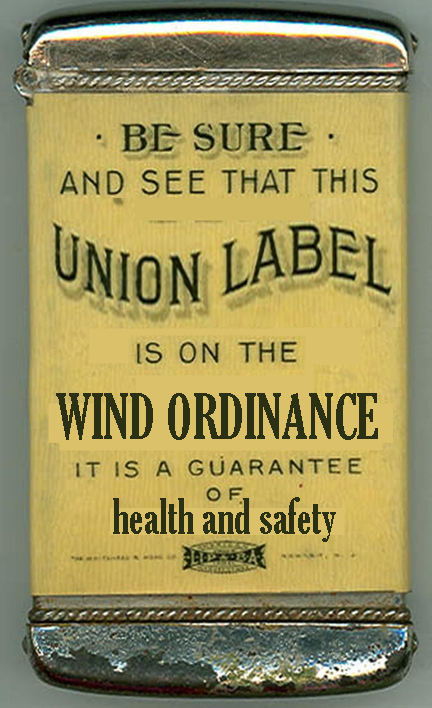 There's one population of victims of industrial pollution that often has it even worse than those who live downwind: those that work within.
There's one population of victims of industrial pollution that often has it even worse than those who live downwind: those that work within.
Groups like ours make it their business to represent the interests of "frontline" residents who live adjacent to, or in close proximity of, places that routinely release crap in the air that affects their health and well-being. Collective action is promoted as a way to address that situation and, in our experience, it works more often than not. At its essence then, Downwinders is a kind of union of pollution victims.
Local residents who decide to step out of line and speak out against the facility's pollution are often ridiculed, threatened, and ostracized. Especially in small towns where the facility is among the largest employers or taxpayers. Because of the interconnections and economic ripple effect of such facilities, some activists get warned about losing their jobs even though they may not work for the offending company itself.
Imagine then the pressure on workers inside the facility whose very livelihood rests on their silent consent. Despite a constant stream of studies showing exposure levels for employees of polluters at many times the levels of those outside company property, they have no collective means to help them relieve their condition. Except for unions. Which means in Texas, they usually don't have any recourse at all.
Lack of union representation for these workers not only diminishes their job security, it means they're much less likely to be willing or able to help those outside the fence line who are also being shat-on. They're on their own, with no organizational backing. They have no access to collective action. In many ways they're less powerful and have fewer options than those getting doused in their own homes across the street from the company. Sometimes they ARE the people in those homes and get it coming and going.
When there's no union, there's much less chance of any kind of meaningful dialog between activists and workers, even though they may share the same concerns and be affected by the same pollution. There's one less ally for activists to recruit in seeking more effective pollution controls or cleaning-up a site. The flow of information about what's really going on inside the facility is circumscribed. Industrial polluters stand a better chance of holding out against change if they can keep those on either side of the fence line from joining forces.
On the other hand, some of the most effective pollution control measures among Texas Gulf Coast refineries and chemical plants are the result of strong unions with the ability to collectively bargain for change. In countries with a longer and stronger union movement, it's the "Labor Party" that usually voices the loudest support for environmental progress.
Unions aren't perfect. They can become as bloated and neglectful as any corporation. They can stifle progress by parroting the wrong-headed notion that less pollution means less jobs. But they're the only counterweight to corporate power within the facility because they can affect the bottom line with a slow down or strike – more potential power than activists often have after years of organizing. If you're an environmental activist, it's in your own self-interest to promote unions.
Likewise, if you're a union representing workers who are getting poisoned, it's in your own self interests to put pressure on the company or industry to clean-up its act by working with environmentalists who can exert their own kind of pressure for action.
That recognition of mutual self-interest is the driving force behind such efforts at the Blue-Green Alliance that merges unions like the Steelworkers, UAW, CWA, and SEIU with the Sierra Club, Natural Resources Defense Council, and, appropriately enough, the Union of Concerned Scientists, into a broader coalition working for climate change action. By working together, they can anticipate and head-off the sudden jerks of unemployment that would happen as we transition off of fossil fuels to a greener economy.
Imagine how much fertile ground could be plowed in discussions between the grunts at drilling sites and the people who live next door if there was a union of such workers that was as concerned about the health of their members as residents were about the health of their children.
There's a long proud history of unions lending their power to social causes beyond the factory gates. Many were important in bringing the civil rights movement out of the South and making it a nationwide litmus test for elected officials. But that was when there was still a strong labor movement in the US; when the president of the UAW or Mineworkers Union were regular White House visitors, no matter which party was in power.
In Texas, a "right to work" state, unions often have the stigma of Leper colonies. They're used as political fodder for Republican candidates swearing they're the first step toward socialism, while being held as arm's length by Democrats for fear of being tainted with a "pro-union" label. Texas environmentalists are in a position to demand better.
Thirty years ago the observation was made that a conservative was just a liberal who'd been mugged. These days in Texas, thanks to fracking, an environmentalist is often as not a conservative who's been gassed. Many of those most affected by the oil and gas industry in North Texas and elsewhere are "dittohead" true believers, but also feel portrayed by officials who have traded their conservative credentials for campaign donations.
After a certain amount of abuse it's not hard for these right wingers to realize that they must organize themselves into collective action on behalf of their communities if they want to keep from being completely run over by companies that don't give a damn. Is it really that far a leap in logic to believe the same principle is true for workers who feel just as disposable to the same company?
Those that come to environmentalism through their own liberal values must reach out and make unions a part of the natural landscape. Just as Greens need to adapt by becoming more racially and economically diverse, so we must become more insistent that unions are an integral part of the change we're seeking. They can make our job a lot easier.
{ 0 comments }
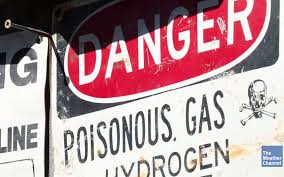 According to a state-sponsored study through the University of Maryland's School of Public Health, "air emissions trump water pollution and drilling-induced earthquakes as a top public health threat posed by future fracking projects in Maryland."
According to a state-sponsored study through the University of Maryland's School of Public Health, "air emissions trump water pollution and drilling-induced earthquakes as a top public health threat posed by future fracking projects in Maryland."
For the better part of a year, faculty surveyed previous research between the gas industry and health effects. They looked at all the possible "exposure pathways" for toxins to reach surrounding populations from gas rigs and facilities and ranked each of the threats. Air quality got a "high" threat ranking, whereas water pollution ranked "moderately high" threat and earthquakes "low."
Dr. Donald Milton, Director of the Maryland Institute for Applied Environmental Health and a UMD professor of epidemiology, biostatistics, and medicine was the study's lead investigator and concluded,
"….existing data show a clear trend: oil and gas activity can spew significant levels of toxic chemicals into the air—and that pollution consistently makes people sick.
"We think [the state] should pay a lot of attention to air pollution," said Milton. Although water pollution is also a concern, Milton told InsideClimate News that there's not enough data on how likely dirty water is to sicken people, nor how strong those health effects would be."
Because most of the reviewed data in the study comes from gas plays that have received a lot of attention over the last couple of years – the Barnett and Eagle Ford in Texas, the Marcellus in Pennsylvania, and the Bakken in North Dakota – Maryland's environmental and public health officials were quick to offer a joint damning disclaimer: "We believe it is important to note that it is largely based on information on natural gas development in areas where the pace of gas development was rapid and intense and without stringent regulations and government oversight." Well yeah, but if our own officials weren't so negligent you wouldn't have the benefit of now learning from our bad examples.
The study was part of a 2011 executive order signed by Maryland Governor Martin O'Malley that outlined a state approach to dealing with potential fracking in the state's western corner, where the Marcellus extends across the Pennsylvania line.
Besides identifying air pollution exposure as a major threat, the study also offered specific recommendations to combat that exposure, including:
– a 2000-foot setback from urban neighborhoods (Dallas and Southlake both have 1500-foot setback provisions)
– baseline air quality monitoring before any drilling or production begins
– constant air monitoring when activity on the site begins
– transparency in the information about the facility.
As the Inside Climate article on the study notes, its conclusions "stand in stark contrast to public concern in heavy-drilling states such as Maryland's neighbor Pennsylvania. Those concerns have tended to focus on tainted water, not air."
Indeed. It's a lot easier to make a fire-breathing water hose into a drive-by YouTube meme than a family gasping for air that won't make them sick. But for most neighbors of urban gas drilling, water quality isn't even on the radar screen because they're getting their H2O from a city pipe running from a lake, not a well. On the other hand, they're directly breathing in the mix of chemicals and pollution coming off the site itself, making their home a frontline toxic hot spot. That site's plume is then combining with hundreds or even thousands of other plumes from similar sites close-by to decrease regional air quality. That air pollution can end-up affecting thousands or millions of residents who don't even live in close proximity to a rig or compressor.
In the most successful "nuisance" court cases against gas operators in the Barnett Shale over the last year or so, air pollution has been the villain keeping families from enjoying their property and running up their medical bills. You can get water trucked in, but it's very hard to do the same with air.
Public comment on the report is open until October 3rd.
{ 0 comments }
 There's an old joke that the best place to find black or brown people in the environmental movement is in grant proposals. Every group uses the well-known and terrible demographic facts of environmental justice to justify their own programming, but almost none of that programming directly involves the subject of those terrible demographics.
There's an old joke that the best place to find black or brown people in the environmental movement is in grant proposals. Every group uses the well-known and terrible demographic facts of environmental justice to justify their own programming, but almost none of that programming directly involves the subject of those terrible demographics.
It didn't get much press, but a new University of Michigan study of a broad array of organizations doing environmental work showed that while black and brown citizens represent nearly 40 percent of Americans, they account for fewer than 16 percent of the employees in those organizations – and that's counting state and federal agencies. Private groups and foundations fare even worse – only 12% of their numbers are people of color. On any given day, the Ferguson Missouri police department and your local environmental group look about the same.
According to the study's author, Dorceta Taylor, a professor in the School of Natural Resources and Environment at the University of Michigan "an 'unconscious bias' exists within the liberal and progressive culture of the groups, preserving a racially homogenous workplace. Recruitment for new staff frequently occurs through word-of-mouth and informal networks. This makes it difficult for ethnic minorities, the working class, or anyone outside of traditional environmental networks to find out about job openings and apply for those jobs.”
In its coverage, the Washington Post, says the report shows the existence of "…two environmental movements. One is white and the other non-white, one rich and the other poor, one devoted largely to advocating on behalf of wilderness areas and the other for “environmental justice” in core urban areas where minorities tend to live." That divide is far more prevalent among the larger, well financed groups that can afford to even hire staff than it is at the grassroots level where all groups struggle and there's less emphasis on wilderness issues. Nevertheless, the divide is there and it's making environmentalism a political side show instead of a a major stage event.
Most of the time, people are motivated by self-interest. When a huge and growing segment of the country's population doesn't see a self-interest in having safe water and air or open spaces, these things become less and less important to a national agenda. And yet, those demographic facts don't lie. Black and brown asthma rates are far above whites. Most polluting industries locate in places that can't fight back. Just as there's a huge imbalance at the top in terms of leadership, so there's also a huge imbalance of who's at risk on the bottom rungs. People of color ignore the environmental agenda at their own risk. But environmental groups that ignore people of color do so at their own risk as well. In another generation, they'll be as relevant as Civil War re-enactors.
We all have to do a better job of connecting the dots, Downwinders included. Right now, we have exactly one person of color on our board and none on staff. Good intentions matter, but they don't matter enough to be used as excuses. Those of us doing the front line work must find the time to widen our ranks or we'll find ourselves without ranks at all.
{ 2 comments }